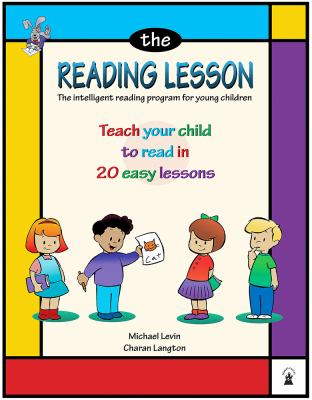I was blown away but at the same time totally lost as how to encourage next steps. I knew I wanted to avoid drilling, flash cards and employ child directed learning. Even when he started recognizing all the letters, I still didn't know where to go next. Now I regret that I didn't seek out what I could to learn about the natural development of reading skills then.
Even as a preschool teacher, I learned how to instruct children in pre-reading skills, but I was not taught the next steps. We were basically trained to leave that to kindergarten teachers. Additionally, I was familiar with the European model of early education which maintained that children were not instructed in reading and writing until age 8 or third grade--obviously not a popular practice in the United States. What I didn't realize--and what I wish I had known--is that it has been a tradition in Jewish and Japanese communities for children as young as three years old to start reading, naturally in a child directed way. That definitely would have sparked my interested and I would have been all years to learn how it is those ends were achieved, in order to decide for myself if that was developmentally appropriate (much in the same way I was incredulous about elimination communication but learned that it is indeed possible).
Its better late than never, though. I didn't know about EC when Willem was a baby and started late with him, but when Belle was born, I did have that knowledge and started with her from the beginning. And now it is now with reading, Belle is starting late (based on the following steps written about in the book The Secret of Natural Readers (available for free download).
The book offers case studies of a number of children who were intent on reading at a young age and led their parents along in learning about letters, their sounds and words to the extent that they were definitively reading during early preschool. There is some background, historical information as well as a discussion of implications for early readers in the school system, but the meat of the book is Chapter 11 where the How, When and Where are described. Parents are offered a framework for how to support their children's print awareness and tips for bridging to the next steps (which is what I needed). The strength of the book is that is employs "talk story" to illustrate the methods that children found most interesting and helpful to inform their skills.
One thing I realized is that teaching reading comes more naturally to some parents more than others. I definitely needed this book to provide a framework and introduction to reading acquisition because I did not figure it out on my own.
With that information, now I feel like I can run with it and find creative and fun ways to turn phonemic awareness into games. Belle, who is now 42 months old, is totally in to it. She has a love for story time and reading out-loud that Willem is just discovering (for some reason, he was totally resistant to sitting down and being read to until just recently). We find that the car is a great time to sing songs about the letters and sounds, in particular the LeapFrog Song for the letter sounds. For digraphs, we sing a variation of "Here we are together" that put letters together like B and R or S and H (Belle's favorite AND its helps to calm a fussy baby).
Stages for the Development of Reading Skills:
Stage 1: A preliminary period of gaining awareness and general knowledge about books and prints (starting any time during the first year).Other resources we are using include Starfall.com, The Starfall Speedway Game, Bob Books, and The Reading Lesson. Pinterest is also a great resource for DIY reading games. Also recommended to me was Teach Your Child To Read in 100 Easy Lessons but the online reviews convinced me that The Reading Lesson would be more kid-friendly. So far, the guide regarding attention span ability by child's age (3 pages at a time for a 5 year old) is right on.
Stage 2: Learning the names of the letters and acquiring a beginning sight vocabulary (starting between twelve and eighteen months)
Stage 3: Learning the sounds of the letters (starting between twenty and twenty-four months)
Stage 4: Putting words together (starting between twenty-four and thirty-two months).
Stage 5: Reading aloud from familiar books (starting between twenty and thirty months).
Stage 6: Sounding out short, unfamiliar words (starting around thirty-two to thirty-four months).
Stage 7: Independent reading of easy, unfamiliar books (around thirty-sex months).
Stage 8: Reading for enjoyment of content (around forty-eight months).
Willem also requested that I start teaching him piano lessons and after a generous gift from a neighbor complete with Teacher's Guide and all the Level A books, we are having lessons about twice a week.
But you are probably wondering, what did Willem decide regarding homeschool? In my last homeschool post, I mentioned it was up to him. He did decide to go to kindergarten (the school is just around the corner from our home) and he is really enjoying the classroom culture and the other children. In the last 2 weeks, the novelty has worn off and I am beginning to suspect that near Christmas time, he might tell me that he's ready to switch to homeschool. I will cross that bridge when we get to it, but for now, I am trying to keep a low level of academic parental involvement that runs parallel to the school curriculum. Maybe that will offer a low-stake way of getting some positive homeschool interactions under our belt and build up our confidence and comfort with working together as teacher and student.


